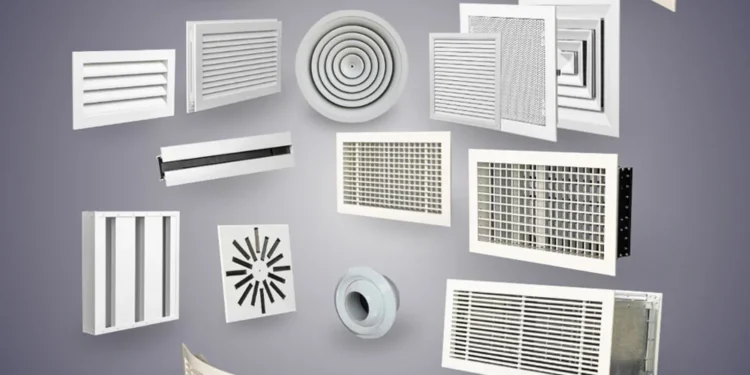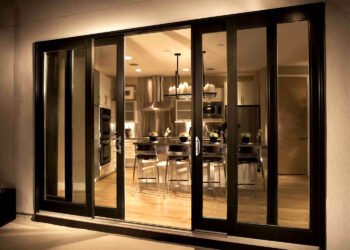High-performance air distribution systems are the backbone of effective HVAC installations and directly impact indoor comfort, energy efficiency, and building performance. From supply outlets to advanced control systems, the systems dictate the effectiveness of conditioned air delivered into occupied areas and create optimal indoor conditions. Appreciating the worth of investing in quality air distribution solutions encourages building owners, designers, and facilities managers to make intelligent decisions that yield long-term equity and enhanced performance.
Enhanced Indoor Comfort and Indoor Air Quality
High-performance air distribution systems deliver enhanced indoor comfort by distributing conditioned air uniformly to rooms in buildings, eradicating hot and cold spots, which generate uncomfortable conditions for building occupants. High-performance design practices are used in such systems for efficient mixing of the air, temperature adjustment, and humidity adjustment in any region of a building.
Terminal commercial air distribution units play a key role in providing consistent levels of comfort by modulating the temperature and flow rates of air at the delivery point to precise specifications. They will respond immediately to changes in load conditions, thus every space is receiving the precise amount of conditioned air required to stay within the comfort parameters desired.
The uniform distribution of clean air across the occupied zone greatly improves indoor air quality by removing stagnation areas for stale air where pollutants tend to accumulate. Quality systems incorporate aspects that maximise effective air circulation and mixing to dilute and remove contaminants continuously through effective ventilation mechanisms.
Enhanced Energy Efficiency and Lower Operating Costs
Next-generation air distribution systems offer a giant step in energy efficiency through tight control of air flow and temperature delivery. Quality systems minimise the waste of energy to the extent possible by distributing conditioned air where and when it is required, giving relief to central HVAC equipment loads along with overall energy consumption.
High-performance air distribution terminal devices of a variable air volume system can modulate automatically air flow rates according to actual space requirements and offer maximum energy efficiency over constant volume systems. Sophisticated systems modulate according to occupancy, indoor thermal loads, and weather conditions to realise maximum utilisation during the daytime.
It reduces the loads on heating and cooling equipment, extends equipment life, and reduces maintenance requirements. Central systems operate better and have fewer service calls when air is delivered where it is needed without wasteful loss or inefficiency.
Advanced control features in new air distribution systems offer advanced energy management methods such as demand-controlled ventilation, night setback controls, and optimised start times. These controls conserve energy effectively without undermining indoor comfort during occupied hours.
High-quality air from reputable sources of air distribution manufacturer is likely to have higher efficiency and performance grades that assist in achieving green building certification and adherence to stringent energy codes.
Precise Temperature and Air Flow Regulation
Advanced air distribution systems provide improved temperature and airflow delivery regulation to enable precise control of environments of individual localised areas or areas of a large complex. Precise control is particularly important in processes where multiple areas need different comfort zones or heat loads.
The modern air terminal units have advanced sensors and control algorithms embedded in them, which continuously sense the space environment and adjust the delivery of air accordingly. The sensitive systems can react to changing occupancy, equipment loads, or weather conditions in real time in a way that delivers ideal conditions within.
Zone-level temperature and air flow control eliminates wastage that occurs because of over-conditioning of areas of a lesser thermal load. The particular environmental control saves on energy expenditure but keeps all areas conditionally controlled to their relative requirements.
Computer-operated systems integrated with high-efficiency air distribution systems enable performance to be optimised and programmed to resist changing occupancy levels or space requirement variations. This gives buildings the capacity to adjust to changing circumstances without having to redesign large-scale systems.
Improved System Reliability and Life Expectancy
Investment in more advanced air distribution systems typically provides higher reliability and life than investment in lower-grade systems. Components built to higher specifications with improved materials and improved manufacturing process produce more stable performance over longer times with much less maintenance requirement.
Commercial air distribution terminal units are built robustly and provide a rigid control function that minimises the risk of degradation in system performance or failure. They are cheaper to support and do away with undesirable conditions resulting from equipment failure.
Quality systems usually possess diagnostic functions and monitoring functions to enable proactive upkeep as well as early identification of potential issues prior to system failures. The predictive functionality enables operations to be made continuously and lowers the surprise cost of repairs.
Flexibility and Adaptability to Meet Future Needs
New air distribution systems offer unprecedented flexibility to adjust to changing building uses, occupancy patterns, or performance requirements in the future. Acoustic systems can often be reconfigured or expanded and do not have to be completely replaced, but can preserve the up-front investment and make building alterations possible.
Adjustable or reprogrammable high-quality terminal air distribution units can be easily customised for many applications as building needs evolve. Flexibility is particularly important in cases where the tenant needs to shift or space utilisation trends shift over a time period in commercial structures.
The integration features of the quality air distribution systems ensure tidy integration with building automation systems and seamless technology upgrade in the future. Compatibility keeps invested capital in the air distribution infrastructure current as building management systems evolve and improve.
Conclusion
Advanced air distribution systems have numerous benefits well worth the cost in the form of increased comfort, energy efficiency, reliability, and long-term value. The benefits of possessing exact control features, improved indoor air quality, and high monitoring capabilities for performance make such a system an indispensable part of modern HVAC installations.
Coordination with skilled experts and trusted vendors ensures access to the latest technology and professional skills in choosing and installing air distribution systems most appropriate for specific building requirements. Long-term benefits of properly planned air distribution systems, including reduced operating costs, increased occupant comfort, and increased building performance, outweigh the investment in them for any building construction project with a vision of maximum HVAC efficiency and performance.





